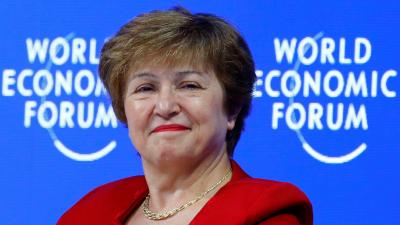 Escalating US-China trade tensions are expected to lead to a massive jump in apparel sourcing from Bangladesh by the US fashion industry, according to a leading survey released this month.
Escalating US-China trade tensions are expected to lead to a massive jump in apparel sourcing from Bangladesh by the US fashion industry, according to a leading survey released this month.
Nearly 67 percent of the respondents expect to decrease sourcing of apparel from China in the next two years resulting in a record high in import from Bangladesh since the United States Fashion Industry Association began conducting the survey.
The report, Fashion Industry Benchmarking Study 2018, says Bangladesh has moved up two positions from No 7 to No 5 since last year in the list of sourcing destinations for the US fashion industry.
“Respondents express more interest in expanding sourcing from Bangladesh in the next two years as companies are actively seeking China alternatives,” says the report.
Experts believe China’s position as the top sourcing destination is unshakeable for now, but “Made in Bangladesh” will continue to enjoy a prominent price advantage over many other Asian suppliers.
Nearly half of respondents expect to somewhat increase sourcing from Bangladesh through 2020, up from 32 percent in 2017 while another 7 percent expect to strongly increase sourcing there, a record high since 2015, says the report.
However, there still remains a serious concern over Bangladesh’s “risk of compliance” and is seen as a notable weakness.
“The high level of media and public attention to the social responsibility problems remaining in the Bangladeshi garment industry, such as factory safety and treatment of workers, further adds to the complexity and sensitivity of the issue,” says the report.
The report’s findings are recognised by global fashion brands and retailers, policymakers, and press around the world as one of the most important sources of data on trade and sourcing patterns and the industry outlook.
The looming trade war between the United States and its several key trade partners, especially China, makes “uncertainty” one of the most popular words for brands and retailers right now, according to USFIA president Julia Hughes.
Protectionist trade policy agenda in the United States continues to be the top challenge for US fashion companies in 2018 and more than 60 percent of respondents rank the issue among their top five business challenges this year.
“But, all is not bleak,” says Hughes, adding,” Our respondents are actually more optimistic about the five-year industry outlook. For the first time, 100 per cent say they plan to hire more employees in the next five years.”
 Business
Business
31200 hour(s) 28 minute(s) ago ;
Evening 07:22 ; Wednesday ; May 08, 2024
'Made in Bangladesh' apparel will see massive jump in US: Survey
Send
Brajesh Upadhyay, Washington
Published : 10:41, Jul 21, 2018 | Updated : 12:17, Jul 21, 2018
Published : 10:41, Jul 21, 2018 | Updated : 12:17, Jul 21, 2018
0 ...0 ...
/ni/zmi/
Topics: Top Stories
- KOICA donates medical supplies to BSMMU
- 5 more flights to take back British nationals to London
- Covid19: Rajarbagh, Mohammadpur worst affected
- Momen joins UN solidarity song over COVID-19 combat
- Covid-19: OIC to hold special meeting
- WFP begins food distribution in Cox’s Bazar
- WFP begins food distribution in Cox’s Bazar
- 290 return home to Australia
- Third charter flight for US citizens to return home
- Dhaka proposes to postpone D8 Summit
Unauthorized use of news, image, information, etc published by Bangla Tribune is punishable by copyright law. Appropriate legal steps will be taken by the management against any person or body that infringes those laws.
Bangla Tribune is one of the most revered online newspapers in Bangladesh, due to its reputation of neutral coverage and incisive analysis.
F R Tower, 8/C Panthapath, Shukrabad, Dhaka-1207 | Phone: 58151324; 58151326, Fax: 58151329 | Mob: 01730794527, 01730794528






